-
 Bitcoin
Bitcoin $109,459.7682
2.44% -
 Ethereum
Ethereum $2,598.6052
6.29% -
 Tether USDt
Tether USDt $1.0003
0.00% -
 XRP
XRP $2.2734
3.95% -
 BNB
BNB $661.4886
1.58% -
 Solana
Solana $155.4825
4.35% -
 USDC
USDC $0.9999
-0.02% -
 TRON
TRON $0.2838
1.04% -
 Dogecoin
Dogecoin $0.1740
8.25% -
 Cardano
Cardano $0.6047
9.04% -
 Hyperliquid
Hyperliquid $40.2302
6.50% -
 Sui
Sui $2.9863
10.05% -
 Bitcoin Cash
Bitcoin Cash $509.5786
0.60% -
 Chainlink
Chainlink $13.8156
6.03% -
 UNUS SED LEO
UNUS SED LEO $9.0142
0.69% -
 Avalanche
Avalanche $19.0337
8.68% -
 Stellar
Stellar $0.2438
5.17% -
 Toncoin
Toncoin $2.9012
3.59% -
 Shiba Inu
Shiba Inu $0.0...01210
6.20% -
 Litecoin
Litecoin $90.0882
7.05% -
 Hedera
Hedera $0.1597
8.53% -
 Monero
Monero $326.3340
2.88% -
 Polkadot
Polkadot $3.6365
9.32% -
 Bitget Token
Bitget Token $4.6162
2.72% -
 Dai
Dai $1.0001
0.00% -
 Ethena USDe
Ethena USDe $1.0002
-0.01% -
 Uniswap
Uniswap $7.6403
10.47% -
 Pepe
Pepe $0.0...01060
12.03% -
 Aave
Aave $281.3664
7.56% -
 Pi
Pi $0.4992
1.76%
What are the steps to withdraw Bitcoin from Gemini to Bitfinex
Withdrawing Bitcoin from Gemini to Bitfinex involves setting up accounts, initiating a withdrawal, and waiting for blockchain confirmation to ensure a secure transfer.
Apr 07, 2025 at 05:22 pm

Withdrawing Bitcoin from Gemini to Bitfinex involves several steps that require careful attention to detail to ensure a smooth and secure transfer. To begin, you'll need to have accounts set up on both platforms and ensure that your Bitcoin is available for withdrawal on Gemini. The process includes initiating a withdrawal on Gemini, entering the necessary details, and confirming the transaction. Once the Bitcoin is withdrawn from Gemini, you'll need to wait for the transaction to be confirmed on the blockchain before it appears in your Bitfinex wallet. Understanding each step thoroughly can help prevent common issues like delays or lost funds.
Preparing Your Gemini and Bitfinex Accounts
Before you can withdraw Bitcoin from Gemini to Bitfinex, it's essential to ensure that your accounts on both platforms are fully set up and verified. On Gemini, you need to complete the KYC (Know Your Customer) process, which involves providing personal identification documents. Similarly, Bitfinex requires you to verify your identity before you can deposit or trade. Make sure your Bitcoin is available for withdrawal on Gemini, meaning it's not locked in any trading positions or pending transactions. Also, ensure that your Bitfinex account has the necessary security measures in place, such as two-factor authentication (2FA), to protect your funds.
Initiating the Withdrawal on Gemini
To start the withdrawal process, log into your Gemini account and navigate to the "Transfer" or "Withdraw" section. Select Bitcoin as the cryptocurrency you want to withdraw. You'll need to enter the destination address, which in this case is your Bitfinex Bitcoin deposit address. You can find this address in your Bitfinex account under the "Deposit" section. Make sure to double-check the address to avoid sending your Bitcoin to the wrong wallet. Enter the amount of Bitcoin you wish to withdraw, keeping in mind any minimum or maximum withdrawal limits set by Gemini. Review all the details carefully before confirming the withdrawal.
Confirming the Withdrawal on Gemini
After entering the withdrawal details, Gemini will prompt you to confirm the transaction. This step often includes a security check, such as entering a 2FA code sent to your mobile device. Once you confirm the withdrawal, Gemini will process the transaction. You'll receive a transaction ID (TXID) that you can use to track the status of your withdrawal on the blockchain. It's crucial to keep this TXID safe, as it's the only way to verify the transaction if any issues arise. The withdrawal process on Gemini may take some time, depending on the platform's processing times and the current network congestion.
Waiting for Blockchain Confirmation
After Gemini processes your withdrawal, the Bitcoin will be sent to the Bitcoin network for confirmation. This step involves miners verifying the transaction and adding it to the blockchain. The number of confirmations required can vary, but typically, Bitfinex requires at least one confirmation before crediting the Bitcoin to your account. You can track the progress of your transaction using a blockchain explorer by entering the TXID provided by Gemini. The time it takes for the transaction to be confirmed can range from a few minutes to several hours, depending on the network's congestion and the fees you paid for the transaction.
Depositing Bitcoin into Bitfinex
Once the transaction is confirmed on the blockchain, the Bitcoin will appear in your Bitfinex account. You can check the status of your deposit in the "Deposit" section of your Bitfinex account. If the Bitcoin doesn't appear immediately, give it some time, as there might be a delay in processing. If the Bitcoin still doesn't show up after a reasonable amount of time, you can use the TXID to contact Bitfinex support for assistance. Once the Bitcoin is credited to your Bitfinex account, you can use it for trading, holding, or further withdrawals to other platforms or wallets.
Common Issues and Troubleshooting
Several common issues can arise during the withdrawal process from Gemini to Bitfinex. One of the most frequent problems is entering the wrong deposit address, which can result in lost funds. Always double-check the address before confirming the withdrawal. Another issue is network congestion, which can delay transaction confirmations. If you encounter delays, you can try increasing the transaction fee to expedite the process. If the Bitcoin doesn't appear in your Bitfinex account after confirmation, contact Bitfinex support with the TXID for assistance. Being aware of these potential issues and knowing how to address them can help ensure a successful withdrawal.
Security Considerations
Security is paramount when transferring cryptocurrencies between exchanges. Always use strong, unique passwords for your accounts and enable 2FA on both Gemini and Bitfinex. Be cautious of phishing attempts and never share your private keys or recovery phrases with anyone. When withdrawing Bitcoin, consider using a hardware wallet as an intermediary step to add an extra layer of security. This involves withdrawing the Bitcoin from Gemini to your hardware wallet and then sending it to Bitfinex. While this adds an extra step, it significantly reduces the risk of losing your funds to hacking or phishing attacks.
Understanding Fees and Limits
Both Gemini and Bitfinex have their own fee structures and withdrawal limits that you need to be aware of before initiating a transfer. Gemini charges a withdrawal fee for Bitcoin transactions, which is typically a small amount in BTC. Bitfinex may also charge a deposit fee, although it's often minimal or waived for certain users. Additionally, both platforms have minimum and maximum withdrawal limits that can affect your transaction. Make sure to check these details on both platforms before proceeding with the withdrawal to avoid any surprises or issues with the transaction.
Monitoring Your Transaction
Once you've initiated the withdrawal from Gemini, it's important to monitor the transaction's progress. You can use a blockchain explorer like Blockchain.com or BlockCypher to track the status of your transaction by entering the TXID. This allows you to see how many confirmations the transaction has received and estimate when it will be credited to your Bitfinex account. Monitoring the transaction can help you stay informed about any potential delays or issues and take appropriate action if necessary. Regularly checking the status of your withdrawal can provide peace of mind and ensure that your Bitcoin reaches its destination safely.
Best Practices for Future Transfers
To ensure smooth and secure future transfers between Gemini and Bitfinex, consider adopting the following best practices:
- Always double-check the destination address before confirming a withdrawal to avoid sending funds to the wrong wallet.
- Use a hardware wallet as an intermediary step to enhance security during transfers.
- Keep your transaction fees in mind and adjust them if necessary to expedite the process during times of high network congestion.
- Regularly update your security measures, including strong passwords and 2FA, to protect your accounts from unauthorized access.
- Keep records of your transactions, including TXIDs, for easy reference and troubleshooting if issues arise.
By following these best practices, you can minimize the risk of errors and ensure that your Bitcoin transfers are as secure and efficient as possible.
Common Questions Related to Withdrawing Bitcoin from Gemini to Bitfinex
Q: How long does it take to withdraw Bitcoin from Gemini to Bitfinex?
A: The time it takes to withdraw Bitcoin from Gemini to Bitfinex can vary. Typically, it involves the time it takes for Gemini to process the withdrawal, the time for the transaction to be confirmed on the blockchain, and the time for Bitfinex to credit the Bitcoin to your account. This process can take anywhere from a few minutes to several hours, depending on network congestion and transaction fees.
Q: What fees are involved in withdrawing Bitcoin from Gemini to Bitfinex?
A: Gemini charges a withdrawal fee for Bitcoin transactions, which is typically a small amount in BTC. Bitfinex may also charge a deposit fee, although it's often minimal or waived for certain users. It's important to check the fee structures on both platforms before initiating a transfer to understand the total cost involved.
Q: What should I do if my Bitcoin doesn't appear in my Bitfinex account after withdrawal from Gemini?
A: If your Bitcoin doesn't appear in your Bitfinex account after the withdrawal from Gemini, first ensure that the transaction has been confirmed on the blockchain. You can use the TXID provided by Gemini to track the transaction's status. If the transaction is confirmed but the Bitcoin still doesn't appear, contact Bitfinex support with the TXID for assistance.
Q: Is it safe to withdraw Bitcoin from Gemini to Bitfinex?
A: Withdrawing Bitcoin from Gemini to Bitfinex can be safe if you follow proper security measures. Ensure that both your Gemini and Bitfinex accounts are secured with strong passwords and 2FA. Double-check the destination address before confirming the withdrawal, and consider using a hardware wallet as an intermediary step for added security.
Q: Can I withdraw Bitcoin from Gemini to Bitfinex without a hardware wallet?
A: Yes, you can withdraw Bitcoin from Gemini to Bitfinex without a hardware wallet. However, using a hardware wallet as an intermediary step can add an extra layer of security to your transaction. If you choose not to use a hardware wallet, make sure to follow all other security best practices to protect your funds.
Disclaimer:info@kdj.com
The information provided is not trading advice. kdj.com does not assume any responsibility for any investments made based on the information provided in this article. Cryptocurrencies are highly volatile and it is highly recommended that you invest with caution after thorough research!
If you believe that the content used on this website infringes your copyright, please contact us immediately (info@kdj.com) and we will delete it promptly.
- Coinbase's Crypto Conquest: The Liquifi Acquisition and the Token Revolution
- 2025-07-03 16:30:12
- Neo Pepe Coin: Can This Meme Coin Make Waves in the 2025 Crypto Market?
- 2025-07-03 16:50:12
- Toncoin, Dogecoin, and Shiba Inu: A Wild Ride in the Crypto Zoo
- 2025-07-03 16:30:12
- AllScale: Stablecoin Solutions Empowering Small Businesses – A New York Perspective
- 2025-07-03 16:35:12
- Neo Pepe Coin Presale: Is This Meme Coin a Serious Crypto Investment?
- 2025-07-03 17:10:11
- Memecoins to Buy in July 2025: Riding the Hype or Investing Wisely?
- 2025-07-03 17:10:11
Related knowledge
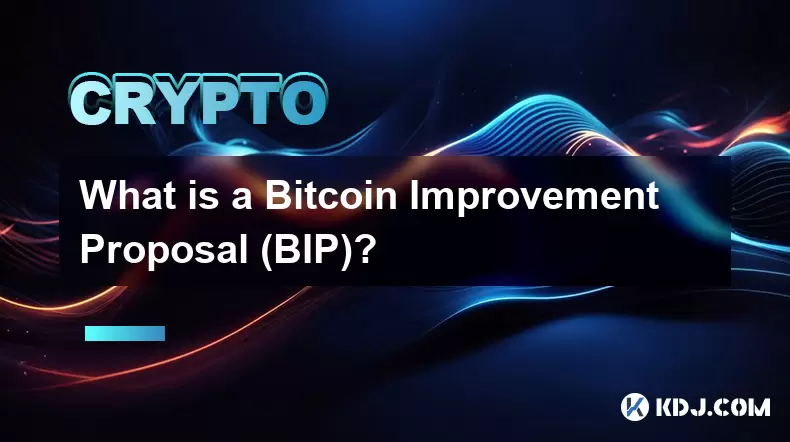
What is a Bitcoin Improvement Proposal (BIP)?
Jul 03,2025 at 11:28am
Understanding the Basics of Bitcoin Improvement Proposals (BIPs)A Bitcoin Improvement Proposal (BIP) is a formal document used to suggest changes, enhancements, or modifications to the Bitcoin protocol. These proposals serve as the primary mechanism through which developers and contributors communicate new ideas for improving the functionality, security...

How to earn interest on my Bitcoin?
Jul 03,2025 at 10:49am
Understanding Bitcoin Interest and Its MechanismsEarning interest on your Bitcoin involves leveraging financial tools or platforms that allow you to lend, stake, or deposit your BTC in exchange for regular returns. Unlike traditional banking where fiat currencies earn interest through savings accounts, Bitcoin’s decentralized nature requires alternative...
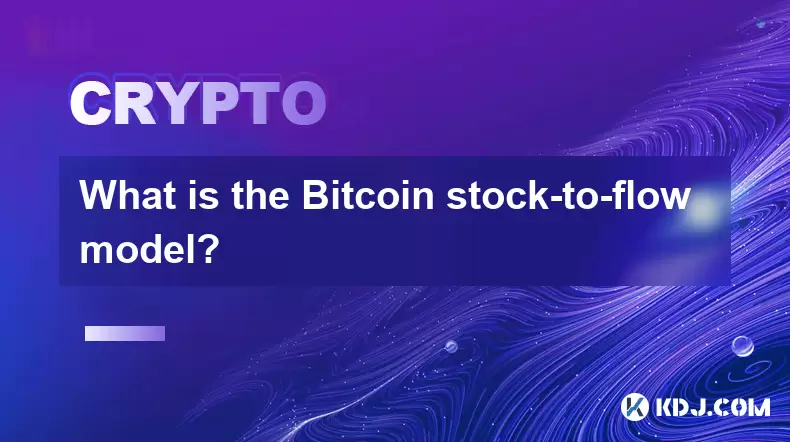
What is the Bitcoin stock-to-flow model?
Jul 03,2025 at 07:49am
Understanding the Bitcoin Stock-to-Flow ModelThe Bitcoin stock-to-flow (S2F) model is a valuation framework that attempts to predict the future price of Bitcoin based on its scarcity. This model, popularized by an anonymous analyst known as PlanB, uses the concept of scarcity from traditional commodities like gold and applies it to Bitcoin. The central ...
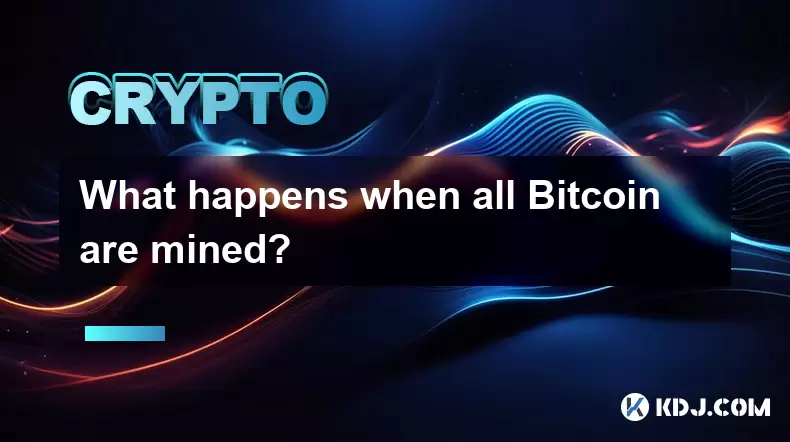
What happens when all Bitcoin are mined?
Jul 03,2025 at 05:35pm
Understanding Bitcoin Mining and Its CapBitcoin mining is the process through which new bitcoins are introduced into circulation. Miners use powerful computers to solve complex cryptographic puzzles, validating transactions and adding them to the blockchain. Each time a block is successfully mined, a set number of bitcoins are awarded to the miner. Howe...
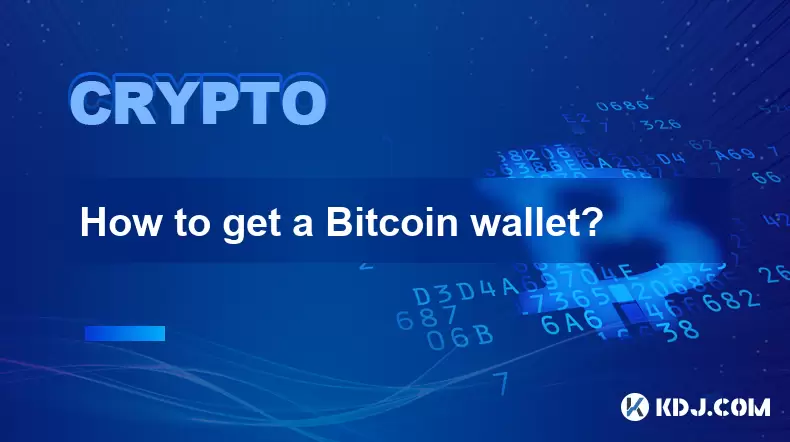
How to get a Bitcoin wallet?
Jul 03,2025 at 10:56am
What Is a Bitcoin Wallet and Why You Need OneA Bitcoin wallet is a digital tool that allows users to store, send, and receive Bitcoin (BTC). Unlike traditional wallets that hold physical currency, a Bitcoin wallet doesn’t actually store the cryptocurrency itself. Instead, it stores the private keys that grant access to your Bitcoin on the blockchain. Wi...
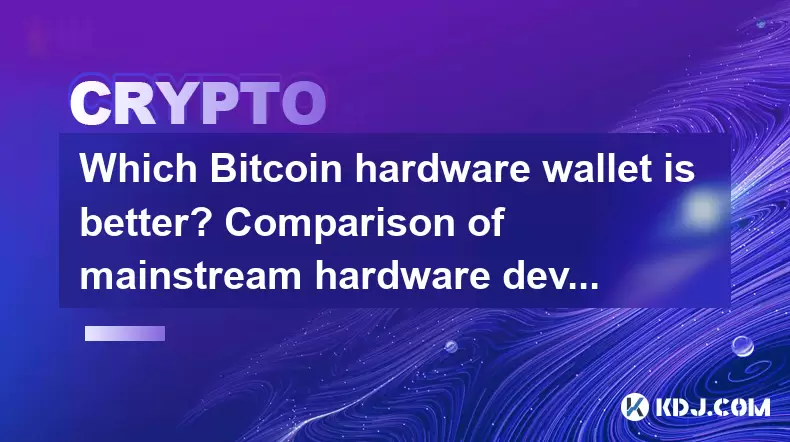
Which Bitcoin hardware wallet is better? Comparison of mainstream hardware devices
Jun 16,2025 at 02:08am
What Is a Bitcoin Hardware Wallet?A Bitcoin hardware wallet is a physical device designed to securely store the private keys associated with your cryptocurrency holdings. Unlike software wallets, which are more vulnerable to online threats, hardware wallets keep private keys offline, significantly reducing the risk of unauthorized access. These devices ...

What is a Bitcoin Improvement Proposal (BIP)?
Jul 03,2025 at 11:28am
Understanding the Basics of Bitcoin Improvement Proposals (BIPs)A Bitcoin Improvement Proposal (BIP) is a formal document used to suggest changes, enhancements, or modifications to the Bitcoin protocol. These proposals serve as the primary mechanism through which developers and contributors communicate new ideas for improving the functionality, security...

How to earn interest on my Bitcoin?
Jul 03,2025 at 10:49am
Understanding Bitcoin Interest and Its MechanismsEarning interest on your Bitcoin involves leveraging financial tools or platforms that allow you to lend, stake, or deposit your BTC in exchange for regular returns. Unlike traditional banking where fiat currencies earn interest through savings accounts, Bitcoin’s decentralized nature requires alternative...

What is the Bitcoin stock-to-flow model?
Jul 03,2025 at 07:49am
Understanding the Bitcoin Stock-to-Flow ModelThe Bitcoin stock-to-flow (S2F) model is a valuation framework that attempts to predict the future price of Bitcoin based on its scarcity. This model, popularized by an anonymous analyst known as PlanB, uses the concept of scarcity from traditional commodities like gold and applies it to Bitcoin. The central ...

What happens when all Bitcoin are mined?
Jul 03,2025 at 05:35pm
Understanding Bitcoin Mining and Its CapBitcoin mining is the process through which new bitcoins are introduced into circulation. Miners use powerful computers to solve complex cryptographic puzzles, validating transactions and adding them to the blockchain. Each time a block is successfully mined, a set number of bitcoins are awarded to the miner. Howe...

How to get a Bitcoin wallet?
Jul 03,2025 at 10:56am
What Is a Bitcoin Wallet and Why You Need OneA Bitcoin wallet is a digital tool that allows users to store, send, and receive Bitcoin (BTC). Unlike traditional wallets that hold physical currency, a Bitcoin wallet doesn’t actually store the cryptocurrency itself. Instead, it stores the private keys that grant access to your Bitcoin on the blockchain. Wi...

Which Bitcoin hardware wallet is better? Comparison of mainstream hardware devices
Jun 16,2025 at 02:08am
What Is a Bitcoin Hardware Wallet?A Bitcoin hardware wallet is a physical device designed to securely store the private keys associated with your cryptocurrency holdings. Unlike software wallets, which are more vulnerable to online threats, hardware wallets keep private keys offline, significantly reducing the risk of unauthorized access. These devices ...
See all articles

























































































